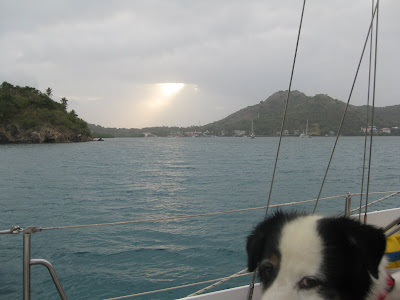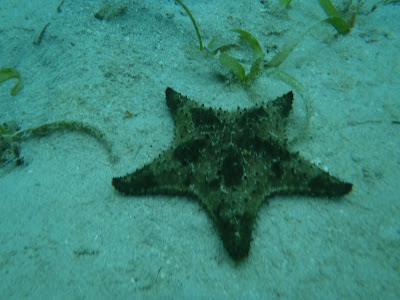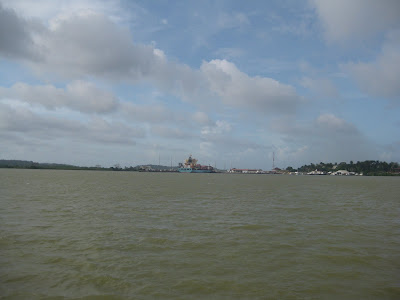It is with heavy heart that I report Perky’s passing. I didn’t go down like I had envisioned – just a puff of smoke at the start, the slow rumble and gentle mechanical tapping of an easy 1800 RPM fading off into the setting sun. The real ending couldn’t have been further from the dream.
Diesel engines of this vintage are built wickedly heavy and like the rest of El Tiburon – solid as a brick shit house. Properly maintained, they will give decades of reliable service, and only require three basic necessities – clean air, clean fuel and clean oil. And even these simple demands are sometime negotiable for short periods of time - rarely causing permanent damage.
So which part of the bargain did we fail to meet? Oil.
And when I say oil, I’m not talking about dirty oil, low oil, old oil, or generic, no-name oil. I’m talking about NO oil.
I know many of you are cringing while you read this, knowing the inevitable outcome. But it’s true. We ran her out of oil – totally bone dry. She tried her best to keep turning over, but in the end, she couldn’t overcome her own internal friction, and ground to a definitive halt.
How it happened is pretty straightforward, and will hopefully serve as a cautionary tale to future boaters – or anyone else who happens to drive a car, run a lawn mower or any other device that’s powered by internal combustion. We had just finished transiting the Panama Canal (with Vince and Marge!), arriving on the Atlantic side for the first time in the life of El Tiburon. Getting ready to leave Panama for Mexico’s Yucatan peninsula would be a pretty routine operation. Just another run to the supermercado for groceries, a topping of the tanks with diesel fuel and lastly, a routine oil change. During oil changes, it’s standard practice to swap a new oil filter for the old one. This is a very easy thing to do and takes just a few minutes. Simply unscrew the old one from the engine block, and screw on a new one. The oil filter makes a seal with the engine on a smoothed metal surface with a rubber gasket in between. Each oil filter comes out of the box with a new gasket standing at the ready. Unfortunately, when the old filter was removed and thrown away, the old gasket hung in place on the engine block like a stowaway. Doesn’t sound too sinister, does it?
When the new filter was installed and screwed home, we now had not one, but TWO gaskets between the engine and the filter. By now, most of you have figured out the rest of the story – it was leak city. The oil pressure generated by the running engine pushed all the oil between those 2 gaskets, and right into the bilge. Should this have happened to a car, the problem would gave been quite obvious, spilling oil all over the ground. All mechanics know that the last thing you do after an oil change is to run the engine and look for any signs of leaks. Engines do not like to lose their oil.
In Perky’s case, she lives under the cabin sole and does most of her work in the darkness of the bilge. Unless someone takes the effort to lift the floorboards and aim a flashlight underneath the engine and peer into the dark confines of the bilge, a leak will go completely unnoticed. Furthermore, it’s especially difficult to spot “new” oil in the black bilge of a chronic oil leaker like Perky. As it turns out, it’s not just our Perky that leaks oil, but nearly every one of the thousands of vintage Perkins diesel engines running today.
Where Perky actually died, you already know from April's post. I will tell you it was a hair raising experience.
Options regarding what to do with Perky, and El Tiburon ran the gamut from – replace the engine with a new one shipped from the States, find a locally rebuilt engine, or rebuild Perky here, in Panama. The first two options seemed very expensive, and rebuilding Perky locally seemed out of the question once we started inquiring with our sailing neighbors in the marina. It seemed that reliable, quality diesel boat mechanics in Panama were rare to mythological. Of course, finding a good mechanic in Panama would not be too difficult, but finding one to leave the shop and come to your boat is another story altogether.
After mulling over the choices, it occurred to us that we had yet another option for getting back to the States - sail El Tiburon back to the Florida without any engine at all! How romantic we thought. Sailing as they had done for centuries, without the use of internal combustion. Just the stars above, a gentle breeze pushing us along and the warm tropical waters of the Caribbean. After a check of the weather and some discussions with other sailors in the marina - our romantic vision imploded. The reality would be more like 20-30+ knot winds, 12 foot waves coming from every direction and reefy lee shores trying their best to suck us to a watery grave. Basically, it would be a suicide mission. Or, as April’s father put it – “the next episode of ‘Jack Ass’!”
Just when we were about to give up hope for a local, reliable, timely and not prohibitively expensive solution, we stumbled onto Kenny Breazeale, and expat from Mississippi and self-proclaimed red neck who grew up building hot rod cars in the south. Yes, we’re talking NASCAR country. The land where parents are thoughtful enough to bless boys with two first names, or at the very least, put a ‘y’ at the end. Kenny has rebuilt several marine diesel engines in Panama and knows the one machine shop in the country that would be up to the task. And best of all, he doesn’t mind having us do all the work while he periodically checks in to see how we’re progressing. This is the way Team Tiburon likes to roll with big projects – just the right amount of supervision to keep us on track and away from pitfalls.
Perky will live again! Step #1 – get Perky off the boat and deliver her to the machine shop in Panama City. Question #1 - how to move a 450 pound engine from the depths of the bilge, into the cabin, out the companionway, over the rail and onto the dock?
All the best to you and stay tuned. Team Tiburon will ride again!























































